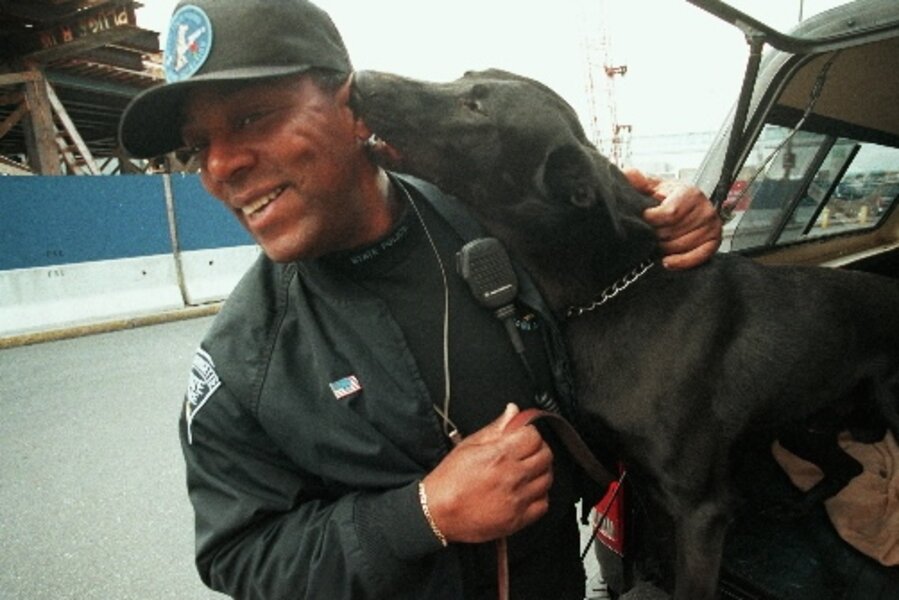Police dog killed in suburban Paris raid. Are they properly honored?
Loading...
Diesel was seven years old when he was killed on Wednesday during a police raid in a Parisian suburb that targeted the suspected mastermind of Friday's Paris terror attacks. The Belgian Shepherd was killed and five police officers were injured when a woman detonated a suicide vest full of explosives.
Police tweeted Deisel’s death on Wednesday, stating “assault and explosives search dogs are indispensable in the missions of the operators of the raid.”
The raid, which took place at 4:45 a.m. in St. Denis, a suburb just outside Paris, was the closest French authorities have come to retracing the trail of Abdelhamid Abaaoud, the Belgian militant suspected of planning the attacks. Two were killed during the raid, including the woman who detonated the vest and another suspect who was shot. Seven people were arrested.
On social media, many others shared photos of Diesel, a dog specially trained dog to sniff out explosives, creating a hashtag #JeSuisUnChien (“I am a dog”). Others tweeted #NotAllHeroesAreHuman, and #RipDiesel. One user wrote: “Goodbye Diesel … live well in a world without men.”
Diesel’s death – and the surrounding support on social media – illustrates changes in the way that the world thinks about the animals we use for security, once treated as disposable. After the Vietnam War finished, American soldiers euthanized or abandoned thousands of their own canine soldiers after the war.
“[The dogs] weren’t a piece of equipment to us. I think I can speak for around 95 percent of the dog handlers that I have talked with since the war, and everybody said, ‘I loved that dog,’” Rick Clagget, a Vietnam veteran who went on to work for the Vietnam Dog Handlers Association, told Vice. “It wasn’t a piece of equipment like a gun or something like that. It was a living, breathing thing that had emotions and played and did all kinds of dog things. You just fall in love with that dog.”
Dogs have been used as animal soldiers for millenia. In the 1930s, the Soviets reportedly used dogs to deliver explosives to German tanks – blowing them up in the process. Other animals, like carrier pigeons, have been used in war to communicate, and even to spy, with camera holsters attached to the birds’ stomachs.
Regulating animal rights during tense security situations has also been a blurred line, though some are offering better service protection.
Services to protect animal war veterans have since sprung up. Efforts are underway that would reunite dogs who assisted in the wars in Iraq and Afghanistan with their former handlers in the United States. The United States War Dogs Association offers “K9 Care,” including medical care, memorials and helps find homes for veteran animals coming home from battle. The group help set up a 22-acre sculpture park that has a famous bronze statue of a Vietnam soldier kneeling next to his dog.






